Stoicism: Naturalism, Corporealism and Logos
In the period of philosophical development that arose as the influence of the Greek culture bled into the period of Roman/ Latin dominance in the Mediterranean and Near East, both the Stoic as well as the Epicurean philosophic schools rose in prominence to challenge and provide alternatives to some of the basic, fundamentally non-materialistic assumptions that were characteristic of their Greek philosophical predecessors. Both of these schools were very popular and influential in their own right in Greek and Roman antiquity, at least up until the time period where Christianity fully eclipses the Hellenic philosophical traditions some six or seven centuries later, after which all of these Greek philosophical schools, including the Greek mystery cults and early Gnostic sects, were branded “pagan” and thereby ostracized and sometimes brutally exorcized by the Roman state.
Both schools attacked, and ultimately emerged from, the Skeptic bent of the Academy that stemmed from their epistemological stance based upon the reality of eidôs (forms) and the unreliability of the physical world of the senses. The debate between what can be viewed as two opposing epistemological positions, which in some respects still rages on today, was concerning the basic building blocks and conception of the not only the universe itself (cosmogony and physics), but also of knowledge and reality itself (epistemology and physics), the Stoics and the Epicureans holding that the material world of our senses was in fact more real than the cognitive reality of forms. This metaphysical inversion has significant implications not only physics and cosmogony, but also on ethics as well. These two philosophic schools were founded by Zeno of Citium (c. 334 – c. 262 BCE) and Epicurus (341 – 270 BCE) respectively, and despite their differences each took a more materialistic concrete epistemological stance as opposed to the teachings of Plato or even Aristotle who despite rejecting Plato’s theory of forms nonetheless was not a materialist per se.
Epicurus (341-270 BCE) was the founder of the Epicurean school and he based his teachings, at least from a cosmological and physics perspective, on the atomic doctrine that was espoused by Democritus some hundred or so years earlier. But the Epicurean system was popular for its ethical, way of life based tenets, teaching that although the world of the gods existed and was true, these gods were too busy in their own mythical world to be bothered with human affairs and therefore supplication to them was of no consequence. He further espoused the belief, consistent with his basic atomic physical cosmogony and distinct from the beliefs of the Stoics founded by Zeno of Citium, that the Soul was a material substance just like the rest of the universe and therefore perished upon death of the body, i.e. was not in fact immortal, constructing a system of beliefs that was based upon the optimization of pain and pleasure to achieve peace and tranquility in this life and effectively removing the concern about judgment and the afterlife from the life equation as it were, thereby eliminating what he considered to be a significant cause of human anxiety. Epicureanism was influential not only during the Hellenic period in antiquity, but also through the period of Roman influence as well as evidenced by its significant treatment and faithful transmission of doctrines through the philosopher/historian Diogenes Laertius from the 3rd century CE who devotes a full chapter on Epicureanism, from which much of our knowledge of the original teachings and metaphysical underpinnings are conserved in fact.
The Stoic theo-philosophical tradition more so than Epicureanism was perhaps the most influential doctrine outside of Platonism in the Hellenic world in antiquity, providing for an alternative, and more intellectually comprehensible approach to metaphysics and ethics as juxtaposed with the seemingly ethereal, and perhaps even mystical, nature of Platonism. Stoicism in particular put forth a fairly advanced view of the Soul and the Mind, one which although was more materialistic than Plato from a certain perspective, was nonetheless fundamentally theological in nature, citing the existence of one true and omnipresent God through which the universe itself not only came into existence but through whom the existence of the universe was looked after and kept in balance – a doctrine that came to be known as corporealism which is an essential and distinguishing feature of Stoic cosmogony, psychology and physics. It could be argued that Stoicism put forth one of, if not the, first comprehensive psychological frameworks in the West, a byproduct of its materialistic realism as it was forced to create a comprehensive framework of mental cognition and perception that synthesized and bridged the concept of logos at the individual as well as cosmic level.
Stoicism was founded by Zeno of Citium (335-263 BCE) in the third century BCE and although differing from the prevalent Academic Skepticism in many respects and on some important key points, it nonetheless emerges from, and borrows many tenets and terminology from, the Academic Skeptics, Peripatetics and even Pythagorean schools which came before him. Zeno, having been born on the island of Samos off the coast of modern day Turkey, is believed to have spent his most prolific studying and teaching years in Athens, where at the time the Academy was flourishing and the legacy and teachings of Pythagoras were no doubt still fresh in the minds of the Greeks. The Stoic lectures and teachings were said to have been held in public in Athens, specifically in the Agora under a “painted porch” (stoa poikilê in Greek) hence the philosophical school came to be known as “Stoic”. The fact that the lectures were open to all and not kept secret, or only taught to the initiated as was the case for the Pythagoreans and even at the Academy albeit to a lesser extent, is certainly one of the reasons as to why Stoicism resonated so well with the Greek populace at large. The popularity of the school and the fame and esteem to which Zeno was regarded at least within Athens is reflected in the fact that, according to Diogenes Laertius the 3rd century CE philosophic historian and author of seminal work Lives of Eminent Philosophers, pillars were erected in his honor at the Academy and the Lyceum and a publicly funded burial was granted to him.
The philosophical tradition founded by Zeno was succeeded by his pupil Cleanthes (331-232 BCE), who was in turn succeeded by perhaps the most notable and prolific of the Stoic philosopher in antiquity Chrysippus (c. 280-207 BCE), the three of which make up what modern philosophical historians call the Old Stoa. But it is no doubt through the teachings and prolific works of Chrysippus, who incorporated and responded to many of the vocal and powerful critics of early Stoic doctrines, that Stoicism matured and became more formalized as a systemic and coherent philosophical system to rival the Academics and Peripatetics and take its place as one of the preeminent philosophical systems in antiquity. To paraphrase an oft quoted line from Diogenes Laertius, “But for Chrysippus, there would be no Porch.”
Although the works of the Old Stoa survive only in fragments and pieces, the doctrine as presented and codified by its first teachers, along with specific and relevant Stoic quotations and excerpts are extant from many subsequent authors and philosophers, speaking to its far-reaching influence in antiquity. The Stoic school showed particularly marked influence on many esteemed Roman/Latin statesman and politicians, collectively referred to sometimes as Late Stoa, and whose writings reflect the deeply practical and ethical foundations of the tradition. With the later Stoic theo-philosophical tradition we find more focus on the practical aspects of the philosophy, the ethical component mostly, as opposed to the physical, logical and cosmological pieces of the doctrine on which the ethical foundations were laid by the Old Stoa. Late Stoa consist of likes of great Latin philosopher and statesman Cicero (106-43 BCE) who provided the basis of the conception of natural law, the Roman philosopher and dramatist Seneca (4 BCE-65 CE) who was also known to be a Stoic, and the even the Roman emperor Marcus Aurelius (121-180 CE) whose diary which came to be known as Meditations (written in Greek) provides remarkable insight into the daily trials and tribulations of a practicing Stoic in Roman times, albeit from a very lofty perch so to speak.
The intellectual landscape within which Stoicism was born was dominated by the teachings of Plato and his successors at the Academy which was reflected by epistemological skepticism and the supremacy of the world of ideas over the material world as the source of knowledge as well as the Peripatetic school founded by Aristotle which expanded the footprint of philosophy in general and was predicated on causation and the notion of substantial form providing for a much more extensive and cohesive epistemological system than his predecessor, albeit not nearly as materialistic as the Stoic and Epicurean systems, and bridged the gap between forms and substance, or essence, to a large extent.
In Aristotle’s doctrine of substantial form, the Stoics most certainly found the core aspects of their physics, resting on very similar epistemological foundations of causation and change, or motion, with an additional fundamental biological component (pneuma) added to their physics which established the metaphysical bridge between the physical world, the world of the Soul (which subsumed their ethics and system of virtue), and the realm of the divine (theology), all of which were considered to be corporeal in the sense that all these principles could be acted upon and were subject to change or evolution, well beyond Aristotle’s original conception of change or motion no doubt, but an interesting and compelling alternative solution to the metaphysical and theological questions which Plato’s doctrines had brought to light.
The origins of Stoic cosmogony, physics and psychology in its earliest form clearly evolved out of the Academic and Peripatetic traditions begun by Plato and Aristotle respectively of which the early Stoa were no doubt intimately familiar, along with some of the more ancient mythological traditions which still held a prominent place in the sociological psyche of the ancient Greeks in the time period that Stoicism flourished in antiquity. The synthesis and process of development of these aspects of Stoicism are probably best summed up by the author of the defining work on Stoic cosmogony, David E. Hahm who although authored Origins of Stoic Cosmogony in 1977 it still nonetheless remains the most comprehensive and definitive work on the subject.
In conclusion, it appears that the origin and development of Stoic cosmobiology was no simple process. The fundamental idea that the cosmos is a living, sentient, intelligent animal was firmly enunciated by Zeno and perpetuated by his successors. This idea, rooted deeply in the mind of the ancient world, Greek and non-Greek alike, was first stated by Zeno in Platonic terms, after Theophrastus had shown that Aristotle’s attempt to eliminate the World Soul had left it as firmly implanted in the cosmos as Plato had believed it to be. Cleanthes continued to support Zeno’s doctrine and to buttress it with new arguments. In so doing, he expanded the concept of the World Soul to embrace Aristotle’s three psychic functions; and he identified the World Soul with the heat of the cosmos, an identification that Zeno must also have made, but to which Aristotle’s physiology now seemed to give further support. Chrysippus, noticing that medical theory had left his school behind, updated Stoic cosmobiology by identifying the World Soul with the pneuma (air-fire mixture) that permeates the cosmos. To this pneuma he assigned the three psychic functions that Cleanthes had taken from Aristotle, but he broke up the nutritive function into growth and a new function called hexis or cohesion {συνεχεία). This last function he used, probably following the precedent of Cleanthes, to explain the cosmological problem of the survival of the cosmos in the void. The ultimate result was that the Stoic cosmos had a biological as well as physical side. Though each side owed its existence to the ideas of others, the total integration of the physical and the biological sides of the cosmos resulted in a totally new cosmogony, one that can only be characterized as purely Stoic.[1]
Stoicism therefore not only offered up an alternative materialistic and deterministic philosophical viewpoint to Epicureanism which accepted the Greco-Roman mythos which was still deeply engrained in the psyche of Greeks and Romans, but also a more practical and sophisticated ethical system based upon their innovative psychological framework and their more broad epistemological position, at least more broad than the view offered by the Platonic school. These no doubt are some of the reasons why the philosophical system was so popular in the Hellenic world in antiquity before being eclipsed, and in many respects integrated into, Christianity.
With respect to Stoic cosmogony and physics as reflected by the works of the Old Stoa, we have to look to sources such as the Middle Platonist author, theologian (priest at the Temple at Delphi) and philosopher Plutarch (c. 45-120 CE),who although a staunch defender of Platonism and is critical of Stoicism in many respects, provides very credible, sound and comprehensive material on many major Stoic philosophical positions and tenets, as well as of course the aforementioned philosophical historian Diogenes Laertius from the 3rd century CE who although wrote many centuries after the Old Stoa still provides a credible and fairly extensive account of the history of Stoicism and its major philosophical tenets within the Chapters he devotes to each of the Old Stoa in Book VII of Lives of Eminent Philosophers, one each for Zeno, Cleanthes and Chrysippus within the Ionian philosophical lineage branch of his work.
It is through all of these authors, again much of which is in Latin as well as Greek, that what we know about Stoicism survives down to us, clearly representing one of the most influential, widespread and lasting philosophical traditions in antiquity. And although much of the original work of the Old Stoa is lost to us, it is possible to ascertain with a good deal of certainty even some of the more esoteric cosmological (physics) tenets of the doctrine which, even though are not the main focus of any of the extant works by self-proclaimed Stoics, can be strewn together by its critics as well as by some philosophical historians – namely Plutarch and Diogenes Laertius specifically. Their fundamental and most lasting precepts, from which our modern notion of “Stoic” derives, primarily have to do with their ethical and moral philosophy, of which we have plenty of direct first-hand materials – notably Marcus Aurelius, Cicero and Seneca among others.
What must be kept in mind in particular when studying the Stoic philosophic tradition, which to a large extent is true of all of the ancient Greek philosophical systems, is that one cannot just look at the ethical and moral tenets of the philosophy without having a good understanding the of the basic cosmological tenets, i.e. physics, as well as the philosophy of logic which underpinned it. This is why Aristotle as well as Plato wrote treatises that deal with rhetoric, logic, poetry, along with ethics and philosophy proper (epistemology for example). These were all branches on the same tree to these ancient philosophical schools and Stoicism had a tradition that called this out explicitly.
We find the most clear exposition of this interconnectedness in the writings of Diogenes Laertius, who in his Lives of Eminent Philosophers, Book VII Chapter on Zeno gives a wholesale review of not only Zeno’s life and times (which arguably borders on myth the in the way he relates some of the stories of his life) but also a fairly detailed overview of the philosophic system which is invaluable in that it is one of the only extant sources that covers the philosophical presumptions and assertions of the system as a whole, at least as reflected by a 3rd century CE philosopher/historian who had access to a wealth of materials and works that are now lost and who was clearly well read in such materials and the Hellenic philosophical tradition as a whole.
Philosophy, they say, is like an animal, Logic corresponding to the bones and sinews, Ethics to the fleshy parts, Physics to the soul. Another simile they use is that of an egg : the shell is Logic, next comes the white, Ethics, and the yolk in the centre is Physics. Or, again, they liken Philosophy to a fertile field: Logic being the encircling fence, Ethics the crop, Physics the soil or the trees. Or, again, to a city strongly walled and governed by reason. No single part, some Stoics declare, is independent of any other part, but all blend together. Nor was it usual to teach them separately.[2]
To the Stoics then, it was within three separate but inextricably linked disciplines of logic, physics and ethics (the order of which were taught differently depending upon the teacher) from which not only would a true understanding of Stoicism could be found but also from which, if understood and practiced correctly, the perfection of the ideal of Stoicism, the attainment of what one might call perfect wisdom, sophia, or perhaps better put the attainment of the full refinement and perfection of the faculty of reason – the Stoic sage – could be realized. All the disciplines hung together in a coherent system – at least coherent to the Stoics – that allowed for their basic philosophical conclusions and allowed for them to reach their basic conclusions around ethical principles which represented what the Stoic tradition in antiquity was best known for.
Furthermore, during this period of six or seven centuries where Stoicism flourishes in the West before being eclipsed by Christianity, there is a somewhat symbiotic evolution that takes place between Platonic thought and doctrine and Stoicism itself, arising out of the debate and exchange of ideas between the two schools – the Skeptic tradition as reflected by the Academy on the one hand, and the Stoics (and to a lesser extent the Epicureans) who could loosely be categorized as materialists on the other.
To the Academic Skeptics who followed the teachings set forth by Plato and his teacher Socrates, ideas were the ontological first principle within which philosophy and its child disciplines – physics, ethics, logic, etc. – were viewed, but to the Stoics and Epicureans, the physical world as perceived by the senses was the ontological first principle upon which their philosophy as a whole was formulated. It must not be forgotten than Zeno, the founder of the Stoic school, studied at the Academy and it is through this lens of epistemological dispute as it were, that we know much about the Stoic tradition, at least some of its more esoteric philosophical aspects. In other words, the Skeptics and the Stoics in some sense defined each other in terms of their epistemological positions.
The Stoics held that not only could fundamental truth and knowledge be ascertained, that Truth in fact could be discerned from falsehood, the fundamental philosophical tenet that distinguished it from the Academic tradition most clearly and was the source of much of the debate between the two schools. In the Stoic tradition, eudaimonia was attainable via the fine-tuning and perfection of the rational faculty of man, which was an integral part of the Soul and reflected the divine rational faculty of God (logos), that when functioning optimally discerned this truth from falsehood consistently thereby preventing the individual from any sort of error in judgment. The goal of the Stoics then was to align this “commanding faculty” (hêgemonikon), with reason and/or Nature, again logos, facilitating the attainment of complete harmony with said Nature and hence eudaimonia – hence their famed adage “living according to the laws of Nature” which codified their beliefs in many respects.
It also must be understood, and is sometimes lost by modern academics who study these ancient systems of philosophy and theology, that although these disciplines provided the rational foundations and systems of learning which provide the backbone of modern science and academia, it was still nonetheless liberation, freedom and more so than anything else what is almost always translated into English as “happiness” but in Greek had much broader connotations stemming from the Greek word eudaimonia (εὐδαιμονία) which etymologically comes from the conjunction of the root eu meaning “good” or “benevolence” and daimōn which is an ancient word that can loosely be translated as “spirit” or “god” but has clear theological connotations. There was a shared goal, a purpose, to each these various philosophic systems, the so called final cause of Aristotle (telos), even if the means by which the goal could be reached, along with some of the basic philosophical tenets of the different systems, was constantly being debated and argued amongst the various schools.
Although it may seem straightforward and rather simplistic at first glance, the whole Stoic philosophical system actually rested on deep and interconnected philosophic assumptions and assertions not only in logic itself, but physics as well which included cosmogony (how the universe was created and what were its basic fundamental constituents) and even fairly well thought out theories of language and its inherent symbology (meaning) which were included in their study of logic(which included the study of dialectic and rhetoric) and included a well thought our system of interpretation of ancient mysteries and poetry, what is sometimes referred to as allegoresis and represents one of the defining intellectual contributions of the Stoics to the West..
Hence, we find the following statement defining the term allegoresis, with supporting quotations attributed to Cleanthes, the student of Zeno and one of the three Old Stoa, from Ilaria L.E. Ramelli in an article from 2011 entitled The Philosophical Stance of Allegory in Stoicism and its Reception in Platonism, Pagan and Christian: Origen in Dialogue with the Stoics and Plato:
Allegoresis had been used since the very beginning of Stoicism, from Zeno’s commentaries on Homer and Hesiod onwards. Cleanthes also engaged in the allegorical interpretation of archaic poetry, even proposing textual emendations that supported it. He was convinced that poetry is the aptest way to express the sublimity of what is divine:
“Cleanthes maintains that poetic and musical models are better. For the rational discourse [Logos] of philosophy adequately reveals divine and human things, but, per se, it does not possess appropriate expressions to convey the aspects of divine greatness. This is why meter, melodies, and rhythms reach, insofar as possible, the truth of the contemplation of divine realities (Stoicorum Veterum Fragmenta 1.486).
Consistently with this, “Cleanthes […] used to state that the divinities are mystical figures and sacred names, that the sun is a bearer of the sacred torch, and that the universe is a mystery, and used to call those inspired by the divinities priests capable of initiating people to mysteries (Stoicorum Veterum Fragmenta 1.538).[3]
The uniquely Stoic emphasis on allegoresis, which was tightly woven at least in the later tradition to the etymology and underlying meaning of the Greek gods in the Hellenic poetic tradition of Hesiod and Homer can be found in the lasting and influential treatise written in Greek by the Roman (Late) Stoic philosopher Cornutus who flourished in the 1st century CE entitled Theologiae Graecae Compendium, Compendium of Greek Theology, which outlined the symbolic and etymological interpretation of Greek mythos and deities, again speaking to the lasting tradition of the allegorical interpretation of myth in general that was a key part of the Stoic curriculum.
This approach to interpretation of ancient mythos and gods of old can also be found in the Middle Platonist tradition as reflected in some of the works written by the Delphic priest and Middle Platonist Plutarch (c. 48 – 120 CE) like Of Isis and Osiris, Or of the Ancient Religion and Philosophy of Egypt which uses the same technique to interpret some of the ancient myths of the Babylonians and Egyptians, as well as in many of the works of the early Christian Church Fathers in their exegesis of the Old Testament, Philo Judaeus and Origen of Alexandria being prime examples.
In many respects borrowing from the tradition of the Academy put forth by Plato, Stoic cosmogony as it survives down to us speaks of two primary principles (archai or arche) which are eternal and which exist throughout the universe – the first being the Creator who is identified with intelligence or reason (Logos), Plato’s Demiurge and the active participant in creation, and a second inert and inactive principle which is acted upon by the Divine Intellect and corresponds roughly to matter. There is a subtle distinction between how these primordial forces are seen to interact and permeate throughout the physical, material universe though and this represents one of the unique and lasting contributions of Stoicism to metaphysics in the Western theological tradition.
In the Stoic tradition, this creative force behind the universe, what came to be equated with the God of Christianity, is identified with an intelligent force, fire or breath – pneuma – the latter term of which came to hold great significance in Stoic metaphysics. This rational Creator structures the physical world of matter according to its plan (again order, or Logos), beginning first with a flash of light or fire and then proceeding with the creation of the four elements – fire, air, water, and earth. In the Stoic cosmological tradition fire and air were seen as active elemental forces and water and earth were viewed as being characteristically passive and receptive.
In both the Stoic as well as he Platonic traditions, as was true in nearly all of the cosmological traditions in antiquity in fact, it is via the movement or combination/mixture of an active (male) force upon a receptive (female) force which is typically associated with matter, what the Stoic tradition termed unqualified substance, from which the four elements emerge in turn from which the entire physical universe is constructed. It is with the Stoic tradition however that this active, ordering principle of the universe (Logos) takes on a more significant metaphysical role, supplanting as it were the cosmogony put forth in Plato’s Timaeus where a Demiurge, or creator, works in conjunction with the principle of the Good (the form of forms) to create the basic elements of the universe, providing a more secure metaphysical construct within which this “order” or “reason” operates to shaped matter into the form of the physical universe as we know it.
The notion of fire, or light, being the primary creative principle of the universe, as well as the term logos to denote the divine ordering principle of the cosmos, kosmos, had antecedents in the tradition attributed to the philosopher Heraclitus (c. 535 – c. 475 BCE), at least according to Diogenes Laertius, although how influenced Zeno was by this Pre-Socratic is largely a matter of speculation.
The Stoics affirm that God is a thing more common and obvious, and is a mechanic fire which every way spreads itself to produce the world; it contains in itself all seminal virtues, and by this means all things by a fatal necessity were produced. This spirit, passing through the whole world, received various names from the mutations in the matter through which it ran in its journey. God therefore is the world, the stars, the earth, and (highest of all) the supreme mind in the heavens.[4]
In the more mature Stoic cosmological doctrine as put forth by Chrysippus which sought to address some of criticisms from the Academic Skeptics no doubt, after the initial creation of the cosmos and the creation of the four elements, the two active elements (fire and air) combine with the two passive elements (water, earth) to form the basic constituents of universal matter which consisted of and were governed by various types of pneuma, a word which is translated as “breath” or “spirit” or “soul” depending upon the context. Pneuma in the Stoic tradition is a key concept that not only underlies its cosmogony, but also all of its physics as well.
Pneuma represented the basic metaphysical building block of the universe which to the Stoics was a fundamentally living and breathing entity from start to finish and permeated all matter. This corporeal, i.e. living and breathing, principle not only helped to define Stoic physics – as a principle which was characterized as capable of acting or being acted upon and subject to change – but also represented the fundamentally intelligence of the universe/cosmos at all levels of creation, from the smallest rock to the most adept of sages. The Aristotelian themes present in this very biological view of the cosmos, specifically pointing to perhaps strong influence from Aristotle’s theories surrounding procreation and generation, have been well documented by Hamm in his comprehensive and seminal work The Origins of Stoic Cosmogony[5].
In the Stoic system of logic, which underpinned its epistemology, language and speech – if formed according to the basic principles of logic that were laid out – was also corporeal, in the sense that it could cause a real effect of change on those that were spoken to, or even read from, the spoken or written word. Stoic logic in this sense, with its underlying semantic and propositional logic, language and grammar theory in general in fact, also represents one of their lasting contributions to the Hellenic philosophical tradition. This emphasis on logic, in the broadest sense of the term as it was used in antiquity which included dialectic, rhetoric and propositional logic (syllogism in the Aristotelian works) is reflected in the fairly extensive treatment of the topic by Diogenes Laertius in the chapter on Zeno where he covers the Stoic views in the discipline of logic in some detail. In Stoic philosophy, the perfect Stoic sage was predicated upon the mastering of language in both its written and spoken form, a “master dialectician” to use their words.
Underlying everything corporeal was again varying degrees of pneuma, looked upon as the “sustaining cause” (synektikon aition in Greek or causa continens in Latin) of all material entities – again anything that could be acted on, acted upon or was subject to change in general, a theory of substance akin to Aristotle but more broad conceptually, somewhat akin to what he would refer to perhaps as substantial form. This pneuma existed throughout the universe in a continuum starting with inanimate matter, the plant and animal kingdom, and culminated at the top of the universal hierarchy in man which had the distinguishing, and fundamentally divine, capability of reason (hêgemonikon), a psychological faculty whose proper functioning was tied very closely to their system of logic which again was very closely allied with their theory of language and propositional logic.
Pneuma was characterized by both an inward as well as outward motion which was the source of both the external qualities of a “thing” or “body” (again inanimate as well as animate) as well as that which provided for unity of existence to that object or entity. In the concept of pneuma to the Stoics saw the hierarchy of substance/essence itself, akin to the hierarchy of Souls laid out by Aristotle (vegetative, animal and human). For in Stoicism, pneuma existed in various forms along the corporeal hierarchy; in inanimate objects where it was characterized primarily as that which gave the object unity or held it together (hexis or “holding”), in the plant kingdom where pneuma was characterized by a more active principle referred to as “nature” (phusis or physis in Greek), in animals where it is characterized by a more complex structure where it was associated with Soul or psychê and was subject to passions and some level of conception or mental reception of said passions (or literally changes of the Soul), and then finally in rational animals, i.e. man, where pneuma is characterized by the divine attribute of Reason (Logos), which is reflected by the existence in man of a “commanding faculty” (hêgemonikon) through which through proper attunement a state of divinity could be attained, thus forming the guiding principle of their entire system of ethics.
Only human beings and gods possess the highest level of pneumatic activity, reason [logos]. Reason was defined as a collection of conceptions and preconceptions; it is especially characterized by the use of language. In fact, the difference between how animals think and how humans think seems to be that human thinking is linguistic — not that we must vocalize thoughts (for parrots can articulate human sounds), but that human thinking seems to follow a syntactical and propositional structure in the manner of language. The Stoics considered thinking in rational animals as a form of internal speech.[6]
Where the cosmological traditions of the Platonic and Stoic philosophical schools diverge however is not only in the combination and primacy of the four elements, but also in the underlying mechanics – metaphysics as it were – at work within the World Soul and the human Soul, from which the two significantly different ethical and psychological systems derive and which is attached metaphysically speaking this notion of pneuma which is unique to the Stoic tradition in terms of emphasis and primacy.
The well documented Skeptic attack on the Stoic philosophical tradition was that for any absolute truth that the Stoics could come up with that their theoretical Stoic sage could “assent” to, the Skeptics could come up with what appeared to be the very same Truth but in fact was not, yielding the paradoxical conclusion that the perfect Stoic sage would actually never “assent” to anything thereby making them in reality a skeptic, i.e. that the physical world made up of impressions and cognitions was not to be taken as constituents of any of the basic elements of Truth, only images or shadows of Truth (Plato’s Allegory of the Cave)]. This criticism can be seen in Plutarch treatise On Nature where his clear Platonist bent is can be seen as he explains the different views of the notion of a mental construct, i.e. Plato’s ideas, in the Socratic, Platonic and Aristotelian traditions in contrast to Stoicism where the construct lies outside its epistemological boundaries:
An idea is a being incorporeal, which has no subsistence by itself, but gives figure and form unto shapeless matter, and becomes the cause of its manifestation. Socrates and Plato conjecture that these ideas are essences separate from matter, having their existence in the understanding and fancy of the Deity, that is, of mind. Aristotle objected not to forms and ideas; but he doth not believe them separated from matter, or patterns of what God has made. Those Stoics, that are of the school of Zeno, profess that ideas are nothing else but the conceptions of our own mind.[7]
To the Stoics, this primordial creative principle of Logos which is the highest derivation of their metaphysical notion of pneuma, acts to not only create the universe but is active within it to preserve and maintain it so to speak, and the entire physical universe is looked upon as fundamentally living and breathing entity, i.e. corporeal. In this sense the Soul of man is seen as a manifestation of this corporeal entity and it is again with the alignment of the same ordering principle of man as well as with the universe itself that the Stoics look to as the way toward liberation or freedom, that term that is typically translated as “happiness” (eudaimonia) but connotes something much deeper in significance in antiquity.
The God of the Stoics was present in all of creation then, not just the manifestation of the hand of the divine craftsman as was typically interpreted to be the case in the Platonic tradition, and this emphasis – what is typically referred to in the academic tradition surrounding Stoicism as corporealism – is unique to the Stoicism and is one of the primary metaphysical constructs that persists into Christian theology. This ever permeating ordering principle which is characteristic of the Creator as well as his creation is the pneuma, or breath of the universe, which corresponds quite directly to the Holy Spirit in Christianity (the same word in fact is used in Greek in the New Testament, i.e. pneuma) which denotes the ever present existence God within the physical universe itself, not simply a physical act of creation ex nihilo as reflected in the Old Testament Elohim or Yahweh version of creation (Genesis), or even in Plato’s account of creation which albeit may not reflect an ex nihilo act by the Demiurge nonetheless retains some level of distinction between the Creator and his creation, what is roughly assigned to the so-called “Receptacle” in the Timaeus.
Stoic cosmogony is also characterized as a constantly evolving and changing process however, not as a creation ex nihilo and not as eternal as the prior philosophic schools had put forth, proving for a notion of destruction, or perhaps better termed devolution, of the universe at the end of its current cycle back into the primary fire (light) from which it initially emerges. This Stoic cosmological doctrine is referred to as conflagration” (ekpyrôsis) – meaning destruction by fire – which fell under their discipline of physics (cosmogony specifically) and distinguished it from the Academic and Peripatetic cosmological doctrines[8].
The Stoic conception of God can be seen as a monistic interpretation of Plato’s cosmogony then, pointing to very similar creation story, a parallel version of events from which the primary elements come forth to construct the universe, but reflects and emphasizes that there exists and ever present divine ordering principle, again Logos, which sustains and permeates the physical universe it until it perishes at the end of the cycle, after which the whole process is repeated again ad infinitum according to the Stoic tradition. Stoic monism is called out specifically by Plutarch, again one of the greatest critics of Stoic ethical doctrine:
The Stoics pronounce that the world is one thing, and this they say is the universe and is corporeal.[9]
This Stoic principle of assent then, as adjudicated and applied by the commanding faculty of the Soul, hêgemonikon, along with the complementary system of logic which was closely associated with language and propositional logic which enabled for the clear establishment of truth versus falsehood, allowed the Stoics to develop a system of ethics that (to them at least) had a sound rational and metaphysical foundation that rested, in contrast to the Platonic tradition, on the presumption of the reality of the corporeal, physical world which in turn mirrored the corporeal universe, each governed by the same principle of reason or logos and was further characterized by their notion of pneuma, which permeated and was subsistent throughout the universe, at the both the individual level and the cosmic level and everything in between, and was governed by a divine ordering principle which came to be known in the Judeo-Christian theological tradition as Logos. For in the Stoic tradition, the notion of corporeality extended not only to the physical world, but also to the abstract world such as the Soul and even to abstract concepts and ideals such as Virtue (arête), Justice and Wisdom (sophia).
So whereas the Platonic tradition rested on the epistemological and ontological primacy of the realm of Ideas and the power of the Intellect to discern fundamentally Good characteristics such as virtue and justice from which happiness ultimately derives, the Stoic school taught that the physical, material world of the senses shared the ultimate spirit of the cosmos with the human soul, albeit of a lesser quality, and that the refinement and ultimate perfection of a particular aspect of the human intellect which is sometimes translated as the commanding faculty but can also be looked upon as the psychological function of what we might refer to as assent (hêgemonikon), one could act in perfect accord with virtue which was the key to human peace and happiness.
To the Stoic then, although the universe was governed by Reason and to a certain extent was predetermined given God’s pervasiveness throughout the universe and their fundamental belief in cause and effect as an a priori construct of the human condition (God is referred to sometimes in this tradition as Fate), although an individual did have Free Will to the extent that they had control over their commanding faculty, which again fully assimilated and absorbed the senses (these were not fundamentally irrational impulses as put forth by Aristotle) within the Soul, of which proper rational adjudication of assent to truth and reality was the key to a virtuous and therefore happy life which, consistent with all of the Hellenic philosophical traditions, was the goal of life and the purpose in fact of philosophy itself.
In the Stoic tradition, the agent of logos was viewed as the rational and active principle of God that permeated the universe and gave it life and characterized both the World Soul and the individual human soul, and again when harmonized and understood properly, with proper attunement of the instrument of logos and its corollary assent, was the secret to their notion of happiness, or contentment, and the core of their ethics.
In this sense Stoic psychology which was based upon the supremacy and reality of the physical world as perceived by our senses and the role of the active principle of intelligence that permeated through the eternal universe, not only deviated from the supremacy of Platonic Ideas, the realm of Being, over the realm of Becoming, or that which was subject to change, but also from Aristotle’s doctrines of being and essence which although more broad than Plato still distinguished between the material world, which to him depended upon intelligibles as well as particulars as reflected in his doctrine of hylomorphism, and the world of Soul which included both form and matter alike and from which all virtues and vices had their source.
True wisdom for the Stoics was in harnessing and utilizing this commanding faculty which was unique to mankind to assent only to impressions that were deemed consistent with Truth according to their system of philosophy (enter the importance of logic), thereby living completely in accordance with Nature, or God, which abided by the very same principles. By purifying the mind and attaining wisdom, one’s commanding faculty could be honed to perfection and no false judgment or “assent” (sugkatathesis) would in fact be possible, hence again the ideal of the perfect Stoic sage, being propelled by the pursuit of pure reason as it were and hence also the modern associations of the term “Stoic” as being bereft of emotion or feeling. In his sarcasm, representing the position of the Academy relative to the Stoic school, Plutarch from the first century CE refers to the Stoic Sage thus:
…but the Stoics’ wise man is not detained when shut up in a prison, suffers no compulsion by being thrown down a precipice, is not tortured when on the rack, takes no hurt by being maimed, and when he catches a fall in wrestling he is still unconquered; when he is encompassed with a rampire, he is not besieged; and when sold by his enemies, he is still not made a prisoner. The wonderful man is like to those ships that have inscribed upon them a prosperous voyage, or protecting providence, or a preservative against dangers, and yet for all that endure storms, and are miserably shattered and overturned.[10]
Even if one takes the position that Stoicism does more borrowing than innovating however, its influence in the philosophical, political and theological landscape in the West is substantial after the period of the late Stoa which ends with Marcus Aurelius, the Roman Emperor who authored Meditations in the latter part of the second century CE. For example, we find many classically Stoic themes in the early Christian tradition which, at least in the first few hundred years before orthodoxy is established, leaned heavily on its Greek philosophical predecessors to legitimize its teachings, in much the same way that the early intellectual interpreters of Islam did. The Stoic philosophical concepts of logos and pneuma both play crucial theological roles in defining early Christian theology, as the “Word of God” and the “Holy Spirit” respectively, both of which display remarkably Stoic features.
Genesis 1:1:“In the beginning God created the heaven and the earth. And the earth was without form, and void; and darkness was upon the face of the deep. And the Spirit of God moved upon the face of the waters.”
John 1:1: “In the beginning was the Word [Logos], and the Word [Logos] was with God, and the Word [Logos] was God.”
The similarities between the Stoic concept of pneuma, which sat at the heart of its corporeal conception of the universe, as well as its notion of the divine Logos which was also the seat of the human intellect, and the Christian Holy Spirit and their view of Christ as the manifestation of the divine Logos (Word) in the flesh reflections of which can be seen in the two oft quoted passages from the Old and New Testament respectively above, are profound and telling and speak to the strong influence that Stoicism had on Christianity which dominated the Western theological and philosophical intellectual landscape for some thousand years after Greek (and pagan) philosophical traditions were persecuted into nonexistence.
Furthermore, the first few (Judeo) Christian theologians who established the philosophical backbone of Christianity not only drew on Stoic metaphysics in order to shed light on the intellectual depth and meaning of the Judeo-Christian scripture, but also made extensive use of allegoresis, again a uniquely Stoic intellectual contribution in antiquity, to illustrate the hidden meanings of various parts of the Old and New Testament outside of a simple literal interpretation which even to the intellectuals of antiquity in some cased was nonsensical.
These altogether Hellenic philosophical trademarks to which the Stoic tradition heavily contributed can be found in the works of Philo Judaeus (c. 25 BCE – c. 50 CE), particularly in his works on Old Testament exegesis where he made extensive use not only of allegoresis in general but also of the Stoic theological construct of Logos as well which is likely the ultimate source of its usage in the Gospel of John. The same textual interpretative techniques can also be found in the works of Clement of Alexandria (c. 150 – c. 215 CE) and Origen of Alexandria (c. 184 – c. 254) who both drew heavily on their Hellenic philosophical predecessors along with Philo Judaeus and also made extensive use of allegoresis to provide the intellectual and philosophical underpinnings to the distinctly theological and mythological literature that characterizes Christian Scriptures as they laid the groundwork for early Christian theology.
Furthermore, the concept of natural law which has had a profound influence on the development of jurisprudence, i.e. legal theory, in the West has its roots with the Roman Stoic philosopher/statesman Cicero (106-43 BCE), particularly in is work On the Laws and On the Republic where he speaks to the important significance of natural law in the proper governance responsibilities of the state, a state governed by and held together by jurisprudence or law in its most pure and objective form as social good in and of itself.
Cicero was strongly influenced by Stoicism, at least in terms of ethics and political philosophy and his theory of natural law can be viewed as an extension of the Stoic precept of “living according to the laws of Nature”, which was the more common transliteration of the more technical Greek term first attributed to Zeno, oikeiôsis, which is although literally translated sometimes as “affiliation” or “orientation” more broadly means “that which belongs to oneself”, like familial affiliation for example. In the legal theory of natural law, the authority of legal standards derives, at least in part, from considerations having to do with the independent and eternally existent moral merit of certain behaviors upon which the laws are crafted and established. That is to say, in the theory of natural law moral propositions are believed to have objective, epistemological, standing in and of themselves and derive from eternal laws of nature which are inherently rational – i.e. reflect the divine Logos which in turn is reflected in the rational faculties of man and contain inherent value from a sociological and political perspective beyond their personal and psychological value.
We can even find very Stoic like themes in the practical philosophy of Immanuel Kant (1724 – 1804) where he deals specifically with ethics and the existence of God and the immortality of the Soul. In his seminal work Critique of Practical Reason he argues that morality stands on pure rational and logical foundations, even if it has no grounding in objective reality as bound by the epistemological stance he puts forth in his theoretical philosophy outlined in his Critique of Pure Reason. That is to say that according to Kant’s philosophical framework, the existence of moral and ethical standards and behavior was based upon reason itself and exists for us as human beings as a byproduct of us being rational, social interdependent creatures. He furthermore put forth that the existence of these moral and ethical standards was predicated on the belief in the immortality of the Soul, the existence of a benevolent God, and the hypothetical existence at least of what he referred to as the highest good, a theoretical reality where all rational beings behave according to pure reason which in turn aligned with perfect morality.[11]
Lastly, we can even find many Stoic philosophical parallels in Eastern philosophic traditions such as Yoga and Vedānta, where pneuma, divine and individual corporealism, the idea of the existence of a commanding faculty which governs human behavior, the idea of living according to the laws of Nature and natural law, and even the idea of the eternal creation, preservation and destruction of the universe in fire, i.e. conflagration, all have direct parallels in the Yogic concepts of prāṇa, Brahman, Ātman, buddhi, dharma, and the cosmic cycles of Brahmā or Yugas. While we cannot trace these Eastern motifs directly back to Stoic origins in the West their philosophic similarities and terminological parallels are remarkably similar.[12]
To conclude then, despite Stoicism’s clear borrowed and synthesized heritage, the philosophical school made distinct, unique and lasting contributions to philosophy proper, ethics, political philosophy and theology in the West. And furthermore, some of its unique intellectual contributions, particularly in the realm of ethics, and epistemology (allegoresis specifically), can provide us with the basis for having a more inclusive and holistic perspective on the seemingly disparate disciplines of Science and Religion even today.
[1] Origins of Stoic Cosmogony by David E. Hahm. Ohio State University Press 1977 pgs. 173-174.
[2] Diogenes Laertius: Lives of Eminent Philosophers. Translated by R.D. Hicks. Harvard University Press 1931. Book VII: 40.
[3] Ramelli, I. (2011). “The Philosophical Stance of Allegory in Stoicism and its Reception in Platonism, Pagan and Christian: Origen in Dialogue with the Stoics and Plato”, International Journal of the Classical Tradition, 18 (3), 335-371.
[4] Goodwin, W. (1878). “Plutarch, Moralia”, Boston: Little, Brown, and Co. 1878. “OF THOSE SENTIMENTS CONCERNING NATURE WITH WHICH PHILOSOPHERS WERE DELIGHTED”. Book I, Chapter VII.
[5] The Origins of Stoic Cosmogony, by David E. Hahm. Published by Ohio State University Press 1977.
[6] Rubarth, S. (2014). “Stoic Philosophy of Mind”, Internet Encyclopedia of Philosophy.
[7] Goodwin, W. (1878). “Plutarch, Moralia”, Boston: Little, Brown, and Co. 1878. “OF THOSE SENTIMENTS CONCERNING NATURE WITH WHICH PHILOSOPHERS WERE DELIGHTED”. Book I, Chapter X.
[8] The doctrine of conflagration can be traced back to the school’s founder Zeno and bears close resemblance to some of the cosmological themes ascribed to the Pre-Socratic Heraclitus (c. 535 – c. 475 BCE). See Salles, R. (2013) Chapter 5 and/or Long, A. (2006) Chapter 13 for more detailed look at the Stoic notion of universal everlasting recurrence, i.e. conflagration.
[9] Goodwin, W. (1878). “Plutarch, Moralia”, Boston: Little, Brown, and Co. 1878. “OF THOSE SENTIMENTS CONCERNING NATURE WITH WHICH PHILOSOPHERS WERE DELIGHTED”. Book I, Chapter V.
[10] Goodwin, W. (1878). “Plutarch, Moralia”, Boston: Little, Brown, and Co. 1878. “A BREVIATE OF A DISCOURSE, SHOWING THAT THE STOICS SPEAK GREATER IMPROBABILITIES THAN THE POETS”.
[11] For a more detailed look at Kant’s practical philosophical framework and origins see Rohlf, M. (2014).”Immanuel Kant”, The Stanford Encyclopedia of Philosophy (Summer 2014 Edition), Edward N. Zalta (ed.)
[12] See the relevant sections of this work for a more detailed look at Indo-Aryan philosophy and Vedānta.

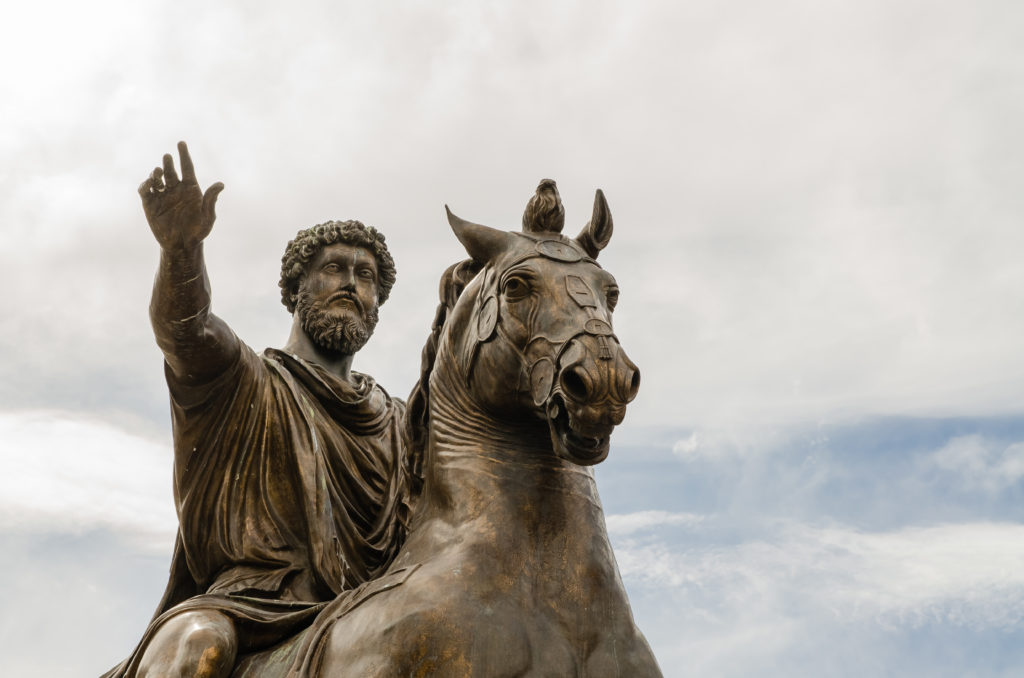
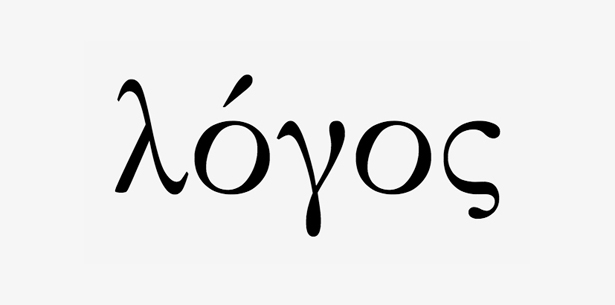
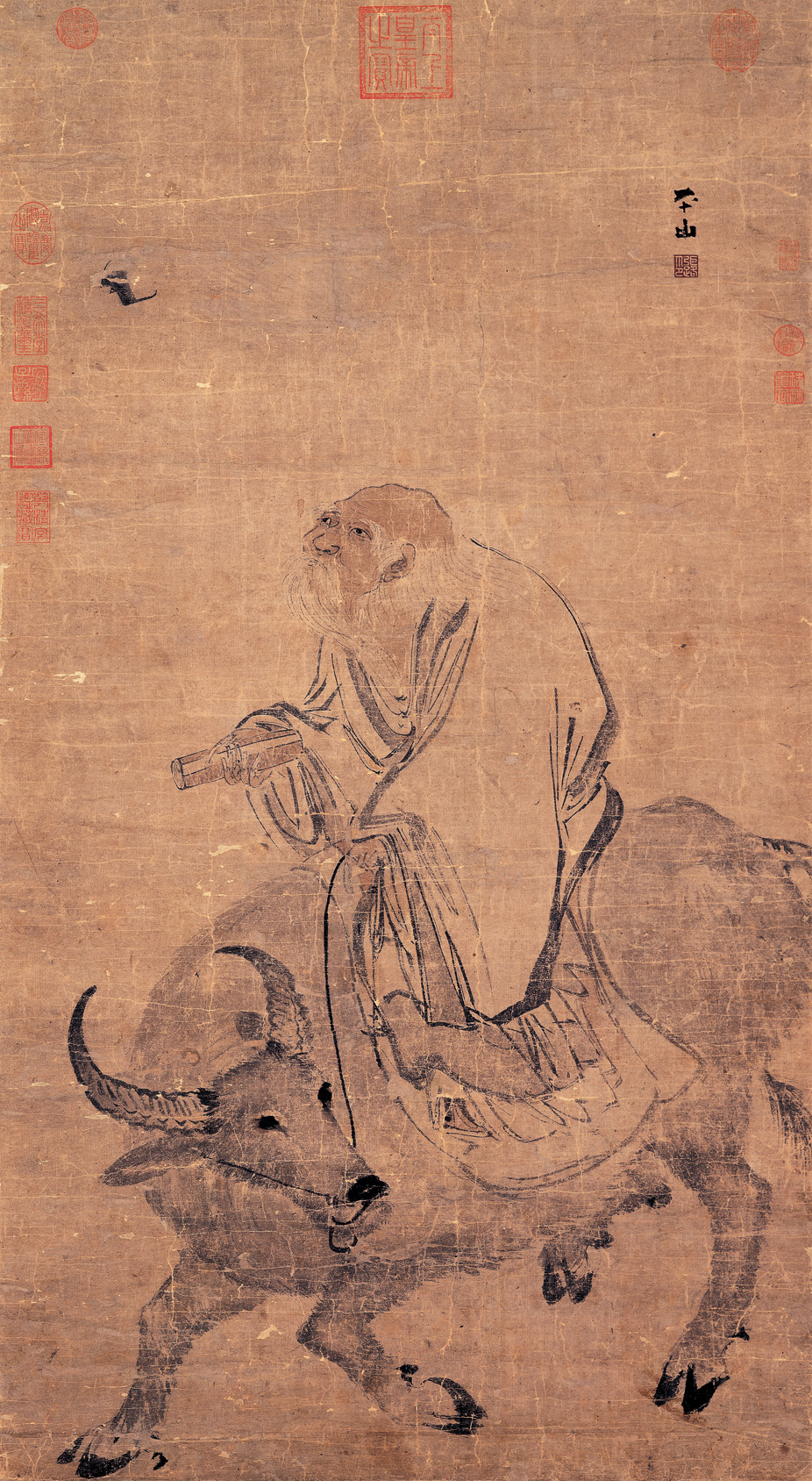

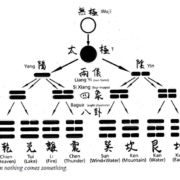
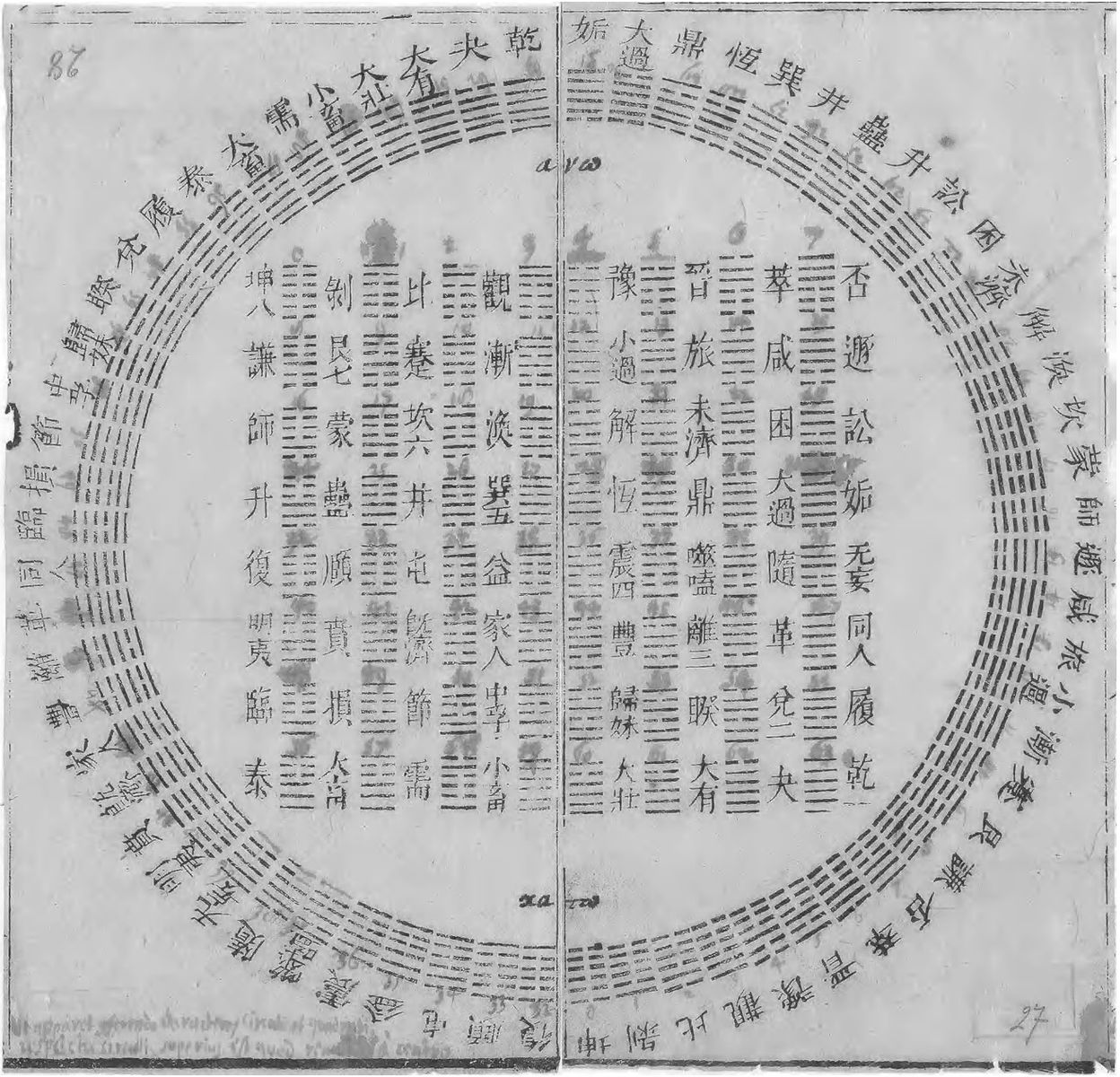

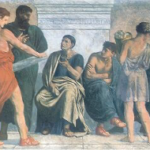
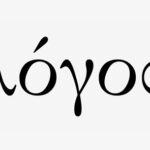
thx for link
thx for link